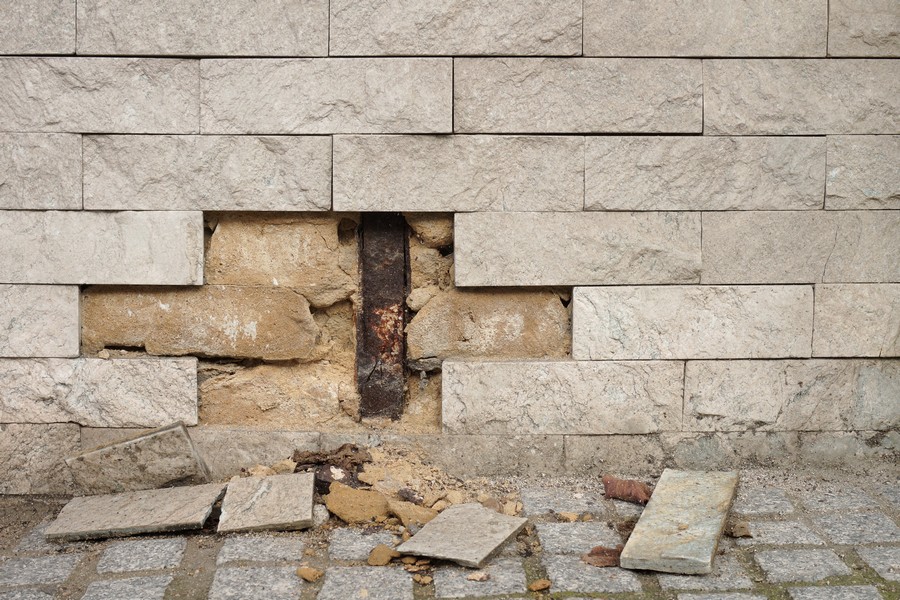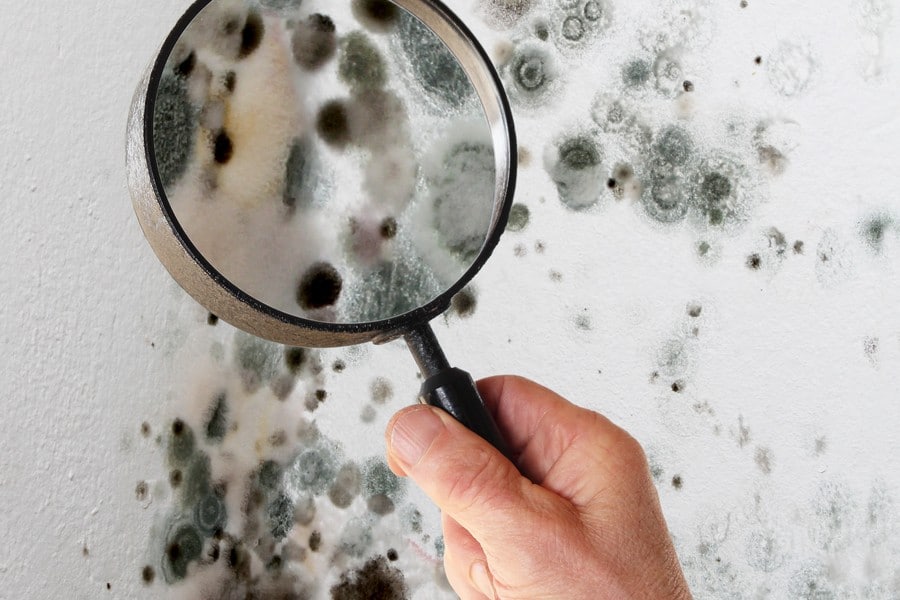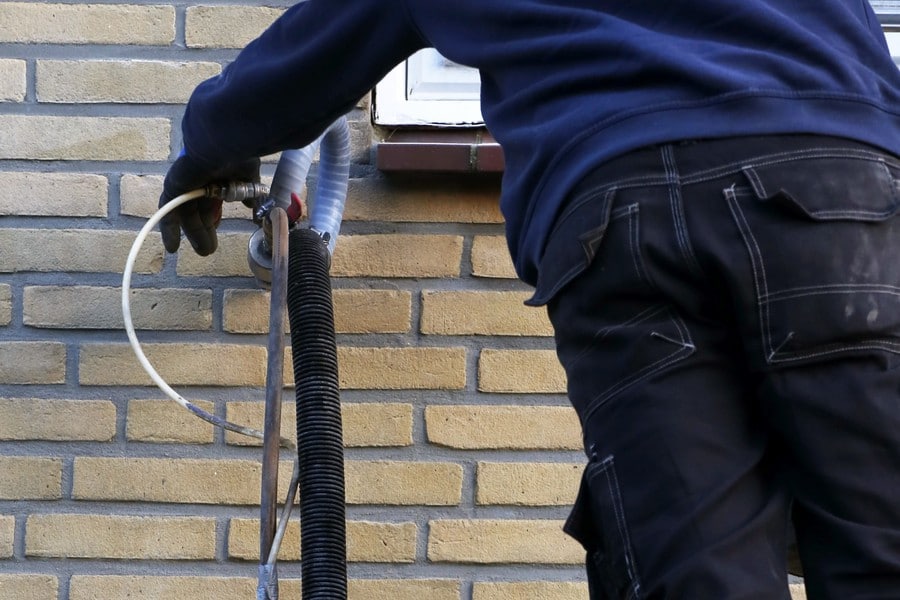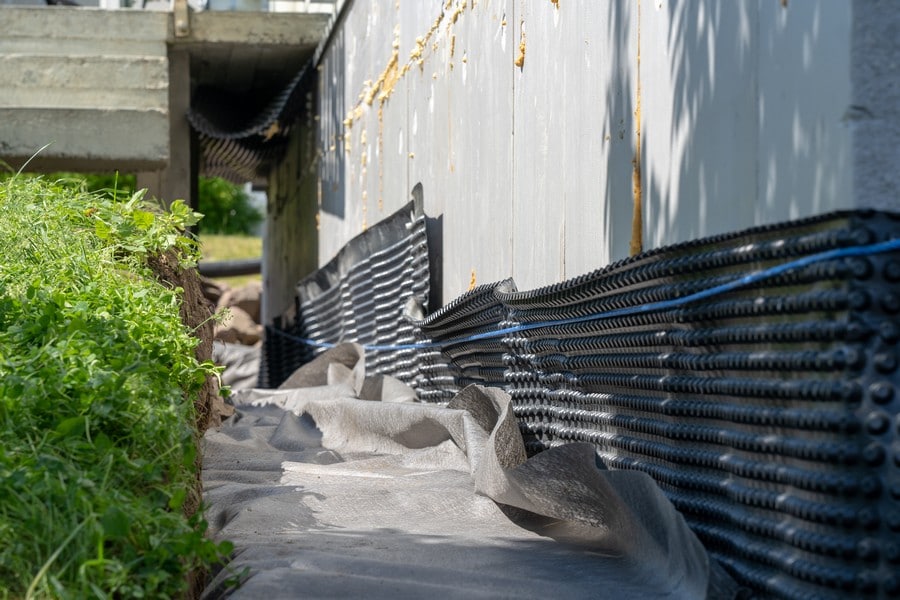Contact Brighton Damp Treatments Now to Speak With an Expert.

Groundwater rising through a wall due to capillary action is what causes rising damp. Bricks and mortar can be highly porous, with tiny capillaries which allow water to ascend. Salts in the seeping groundwater may stain plaster and cause permanent visual degradation.
Some homes were constructed without a damp-proof course, or the existing one has deteriorated, causing rising moisture and necessitating remedial action.
Rising damp is caused when a building’s damp proof course (DPC) has been compromised or hindered due to the surrounding ground level. Moisture containing salts and other minerals from the earth, such as nitrates and chlorides, will travel up into the brickwork and plastering of the walls. As these substances dissolve quickly in water they become increasingly present with an increase in moisture levels. To rectify this problem, our specialist team recommend using a damp-proofing cream injection which is both clean and effective. For more information or to speak directly with one of our rising damp specialists today please call us on 01273 920588.

Injecting cream is the most effective means of damp-proofing; however, it will be less successful if the issue has other sources. A survey should therefore take place prior to any implementation.
This property survey and report examines any damp issues in the building, assessing the severity of damage and outlining steps to address or reverse it.
Our surveyors, specialised in dampness, execute this procedure. They examine the location and amount of dampness as well as any damage it could cause if left untreated, identifying its type (wet rot, dry rot, condensation or other issues) and determining an effective solution. For more information regarding potential solutions to your damp problem please call our team on 01273 920588.

Contact Brighton Damp Treatments Now to Speak With an Expert.
To treat and prevent rising damp, we employ various strategies. Injecting a silicone-based compound through tiny holes in the wall is one of the most efficient and economical solutions. When dried, it forms a water-repellent layer within the wall. Generally, some of the internal plaster bearing salt residue from moisture must be eradicated and replaced with salt-resistant plaster to enable natural drying of moisture contained in the wall.
After taking out the polluted plaster, it is recommended to install a new chemical damp proof course using a Silane/Siloxane cream solution and an advanced DPC injection cream. The afflicted walls should then be injected with this under pressure, followed by waterproofing the sand and cement render backing layer.

A tell-tale tide line of yellow or brown staining, blown plaster in the lower region of walls above skirting boards is a common indicator of rising damp. Additionally, decaying or moist skirting boards and floors may be present. While performing a short repair (e.g repointing or painting) may seem like an easy solution to rising damp now, it will only lead to more costly repairs at a later date.
For treating and curbing rising damp, we employ a selection of techniques and solutions. Injecting a siloxane-based chemical into the wall via several tiny holes is one of the most economical treatments, delivering significant long-term success at an affordable cost.
A damp proof course is a barrier that prevents water from entering the wall via capillary action. It runs the length and width of the wall to ensure waterproofing.
A special membrane, a damp proof membrane (DPM), is attached to the construction to guard against moisture. Polyethene material and shotcrete – which contains cement – are positioned beneath a sheet of concrete to manage water and pressure. Cavity walls between inner and outer walls keep out water whilst masonry walls are sealed with pressure grouting; this is an effective way of shielding structures from water and humidity such as rain.
Almost all walls respond effectively to damp-proofing creams. This is important, as no two rising-damp affected walls are the same; the mortar used to construct them can vary greatly and have a major influence on any solution’s success. For advice, please contact one of our specialists.
When it dries, a water-repellent barrier is formed inside the wall. Generally, some internal plaster affected by salts from rising damp needs to be taken away and switched with a salt-resistant plaster, allowing moisture within the wall to dry out naturally.
Constructing an optimum protection from rising damp lessens the moisture in the wall, thwarts accumulation of ground salts and minimises heat loss.

Independent studies conducted on houses around the world have certified the efficacy of this damp proofing cream in a wide range of scenarios.
Mortar with a lime base can be used to construct buildings and walls. It is made from a combination of hydrated lime, sand, and water, mixed together in the proper proportion. The ratio of ingredients should be one part hydrated lime to three parts sand. Once the mortar has been mixed together it should be left for 24 hours before use.
Exterior wall rising dampness can lead to rendering damage, efflorescence and masonry cracks. Applying a damp-proofing cream is recommended to eradicate this issue, thus preventing further harm to the walls.
An external masonry cream can be applied to the wall’s exterior for an additional layer of protection against moisture penetration. This is not done through injection.

The cost of a professional DPC injection varies depending on location and provider; however, one can usually assume around £70 per metre for wall treatment – amounting to approximately £275-£300 per wall.
The injection alone is the price quoted; additional cosmetic work such as repainting and plastering post-treatment will raise the total cost. However, these efforts will create a more enjoyable environment in your building, providing you with lasting assurance that dampness won’t be an issue for years to come.
Our damp proofing experts will thoroughly assess and identify the severity of your damp issue. Our services offer tailored treatments and knowledgeable technical advice to tackle all forms of property-related dampness: rising damp, woodworm, dry rot, condensation, and structural waterproofing.
Brighton Damp Treatments is a specialist firm in damp proofing, waterproofing solutions, timber preservation and other property-related wetness matters. We conduct preliminary investigations culminating in a damp report – such as a damp survey, a damp and timber survey or a timber survey – determining any potential timber issues that may be due to flaws in the wood, construction errors or earlier unsuccessful remedial work.
We carry out thorough, non-invasive inspections and surveys of sites, then produce comprehensive written reports with recommendations and instructions for any remedial work required. We can also provide you with prices and estimates for the corrective measures based on our findings. We will do all we can to make sure the costs are clear so that you have peace of mind.
Brighton Damp Treatments has experienced staff who provide superb service with a pleasant attitude, something we are very pleased with. We guarantee expertise, professionalism and hard work from the initial inspection to the subsequent consultation and completion of the job; rest assured knowing you’re in good hands. Advantages of choosing us:
Experts in producing comprehensive reports on damp and timber, offering a professional service.
Surveyors who possess full CSRT qualifications are available.
The Property Care Association (PCA) consists of members who are dedicated to providing quality services. They strive to ensure their clients receive the best service possible and work hard to maintain high standards in all areas of property care.
This company is highly recommended. It has earned a stellar reputation for its quality service and unbeatable prices.


Max and his team have been at our property all week and I really can’t thank them enough for the fantastic job they’ve done on plastering both our walls and ceilings. They have literally transformed the appearance of our house! Not only has Ma…
From start to finish Max has been incredable. His knowledge lin damp proofing is second to none and his team where very clean and polite. The plastered finish was like glass so happy we choose Max Plastering for job.
Lovely bunch of lads left a very neat and clean job. Problem was solved.
Perfect Finnish and all left clean and tidy and no mess. Used Max previously and would not hesitate to ask him carry out more work.
Max, Harvey and Stuart arrived promptly as arranged. Done a great job on our outside rear wall. Work completed to a high standard, removal of all old material and cleaned up after themselves. I am so pleased with the standard of their work they ar…
They turned up on time and carried out the works in a very professional manor leaving the front of the house clean and tidy. Very impressed would definitely recommend.
I have to say that on every level Max (with Stuart and Harvey) did an extremely professional job! They explained what they were going to do, they were polite and courteous and respected that they were coming into our home. The plastering is of the…
I called max and he managed to come around the same day to do a survey. The next day I received an extremely detailed survey compared to any other damp proofer which made me feel very at ease that he was going to do the right job. Max and team tur…
Contact Brighton Damp Treatments Now to Speak With an Expert.